Rodrigo Canaan
Coralai: Intrinsic Evolution of Embodied Neural Cellular Automata Ecosystems
Jun 14, 2024

Abstract:This paper presents Coralai, a framework for exploring diverse ecosystems of Neural Cellular Automata (NCA). Organisms in Coralai utilize modular, GPU-accelerated Taichi kernels to interact, enact environmental changes, and evolve through local survival, merging, and mutation operations implemented with HyperNEAT and PyTorch. We provide an exploratory experiment implementing physics inspired by slime mold behavior showcasing the emergence of competition between sessile and mobile organisms, cycles of resource depletion and recovery, and symbiosis between diverse organisms. We conclude by outlining future work to discover simulation parameters through measures of multi-scale complexity and diversity. Code for Coralai is available at https://github.com/aidanbx/coralai , video demos are available at https://www.youtube.com/watch?v=NL8IZQY02-8 .
EINCASM: Emergent Intelligence in Neural Cellular Automaton Slime Molds
May 22, 2023
Abstract:This paper presents EINCASM, a prototype system employing a novel framework for studying emergent intelligence in organisms resembling slime molds. EINCASM evolves neural cellular automata with NEAT to maximize cell growth constrained by nutrient and energy costs. These organisms capitalize physically simulated fluid to transport nutrients and chemical-like signals to orchestrate growth and adaptation to complex, changing environments. Our framework builds the foundation for studying how the presence of puzzles, physics, communication, competition and dynamic open-ended environments contribute to the emergence of intelligent behavior. We propose preliminary tests for intelligence in such organisms and suggest future work for more powerful systems employing EINCASM to better understand intelligence in distributed dynamical systems.
The AI Settlement Generation Challenge in Minecraft: First Year Report
Mar 27, 2021



Abstract:This article outlines what we learned from the first year of the AI Settlement Generation Competition in Minecraft, a competition about producing AI programs that can generate interesting settlements in Minecraft for an unseen map. This challenge seeks to focus research into adaptive and holistic procedural content generation. Generating Minecraft towns and villages given existing maps is a suitable task for this, as it requires the generated content to be adaptive, functional, evocative and aesthetic at the same time. Here, we present the results from the first iteration of the competition. We discuss the evaluation methodology, present the different technical approaches by the competitors, and outline the open problems.
* 14 pages, 9 figures, published in KI-K\"unstliche Intelligenz
Game Mechanic Alignment Theory and Discovery
Feb 20, 2021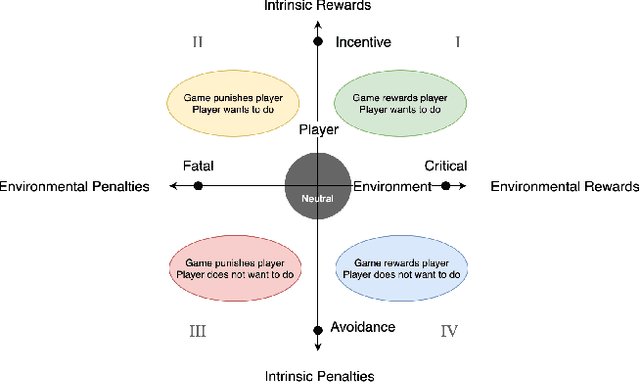
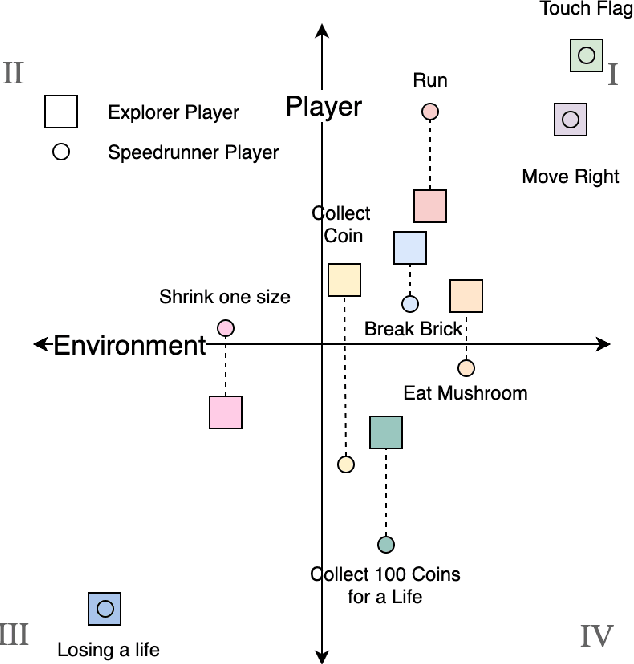
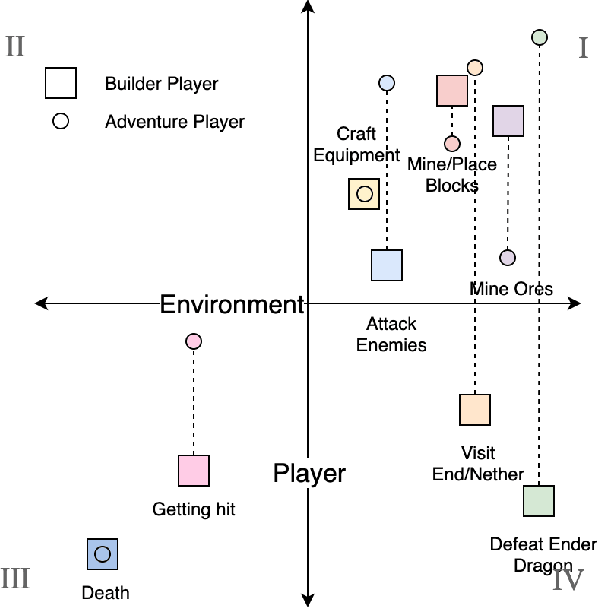
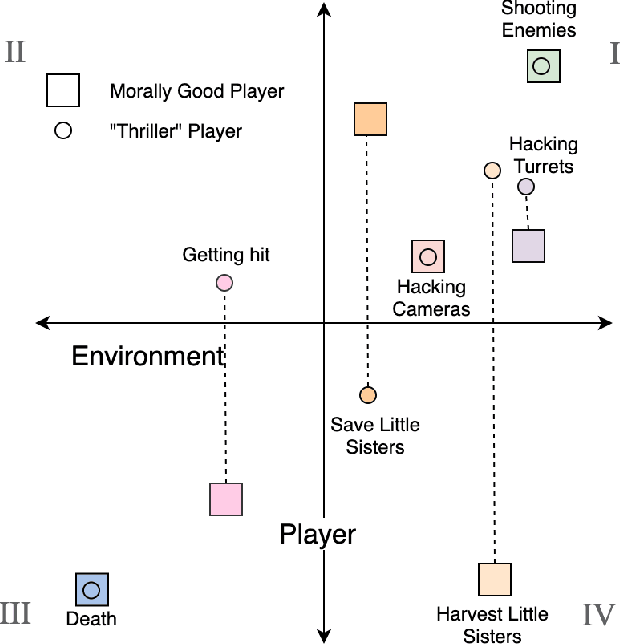
Abstract:We present a new concept called Game Mechanic Alignment theory as a way to organize game mechanics through the lens of environmental rewards and intrinsic player motivations. By disentangling player and environmental influences, mechanics may be better identified for use in an automated tutorial generation system, which could tailor tutorials for a particular playstyle or player. Within, we apply this theory to several well-known games to demonstrate how designers can benefit from it, we describe a methodology for how to estimate mechanic alignment, and we apply this methodology on multiple games in the GVGAI framework. We discuss how effectively this estimation captures intrinsic/extrinsic rewards and how our theory could be used as an alternative to critical mechanic discovery methods for tutorial generation.
Generating and Adapting to Diverse Ad-Hoc Cooperation Agents in Hanabi
Apr 30, 2020



Abstract:Hanabi is a cooperative game that brings the problem of modeling other players to the forefront. In this game, coordinated groups of players can leverage pre-established conventions to great effect, but playing in an ad-hoc setting requires agents to adapt to its partner's strategies with no previous coordination. Evaluating an agent in this setting requires a diverse population of potential partners, but so far, the behavioral diversity of agents has not been considered in a systematic way. This paper proposes Quality Diversity algorithms as a promising class of algorithms to generate diverse populations for this purpose, and generates a population of diverse Hanabi agents using MAP-Elites. We also postulate that agents can benefit from a diverse population during training and implement a simple "meta-strategy" for adapting to an agent's perceived behavioral niche. We show this meta-strategy can work better than generalist strategies even outside the population it was trained with if its partner's behavioral niche can be correctly inferred, but in practice a partner's behavior depends and interferes with the meta-agent's own behavior, suggesting an avenue for future research in characterizing another agent's behavior during gameplay.
Evaluating the Rainbow DQN Agent in Hanabi with Unseen Partners
Apr 28, 2020



Abstract:Hanabi is a cooperative game that challenges exist-ing AI techniques due to its focus on modeling the mental states ofother players to interpret and predict their behavior. While thereare agents that can achieve near-perfect scores in the game byagreeing on some shared strategy, comparatively little progresshas been made in ad-hoc cooperation settings, where partnersand strategies are not known in advance. In this paper, we showthat agents trained through self-play using the popular RainbowDQN architecture fail to cooperate well with simple rule-basedagents that were not seen during training and, conversely, whenthese agents are trained to play with any individual rule-basedagent, or even a mix of these agents, they fail to achieve goodself-play scores.
Diverse Agents for Ad-Hoc Cooperation in Hanabi
Jul 08, 2019



Abstract:In complex scenarios where a model of other actors is necessary to predict and interpret their actions, it is often desirable that the model works well with a wide variety of previously unknown actors. Hanabi is a card game that brings the problem of modeling other players to the forefront, but there is no agreement on how to best generate a pool of agents to use as partners in ad-hoc cooperation evaluation. This paper proposes Quality Diversity algorithms as a promising class of algorithms to generate populations for this purpose and shows an initial implementation of an agent generator based on this idea. We also discuss what metrics can be used to compare such generators, and how the proposed generator could be leveraged to help build adaptive agents for the game.
Evolving the Hearthstone Meta
Jul 02, 2019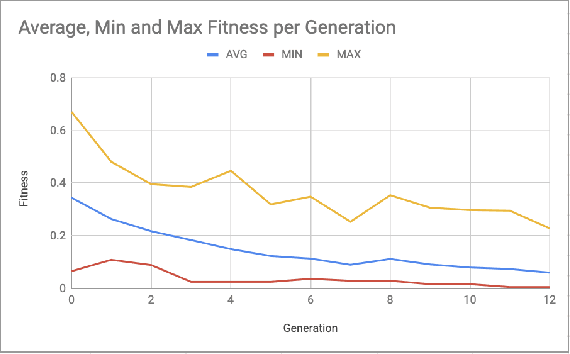
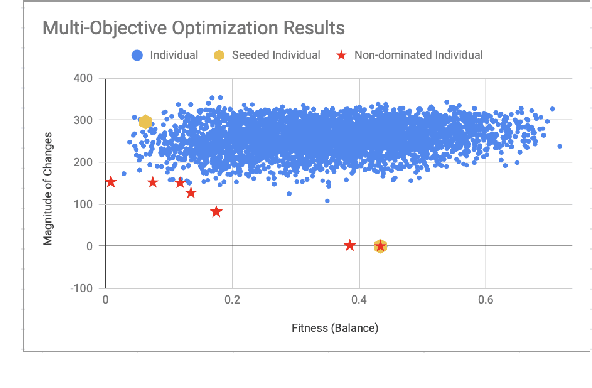
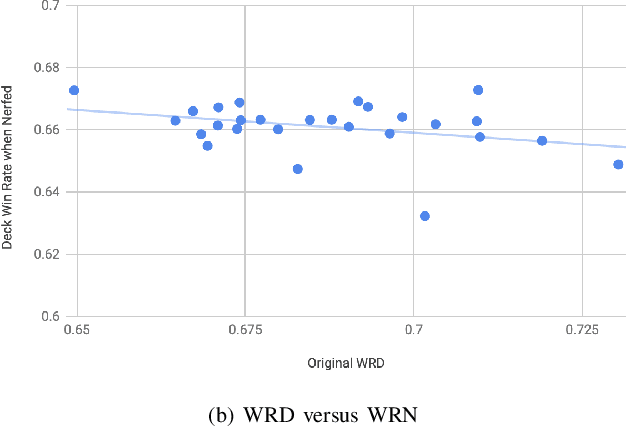

Abstract:Balancing an ever growing strategic game of high complexity, such as Hearthstone is a complex task. The target of making strategies diverse and customizable results in a delicate intricate system. Tuning over 2000 cards to generate the desired outcome without disrupting the existing environment becomes a laborious challenge. In this paper, we discuss the impacts that changes to existing cards can have on strategy in Hearthstone. By analyzing the win rate on match-ups across different decks, being played by different strategies, we propose to compare their performance before and after changes are made to improve or worsen different cards. Then, using an evolutionary algorithm, we search for a combination of changes to the card attributes that cause the decks to approach equal, 50% win rates. We then expand our evolutionary algorithm to a multi-objective solution to search for this result, while making the minimum amount of changes, and as a consequence disruption, to the existing cards. Lastly, we propose and evaluate metrics to serve as heuristics with which to decide which cards to target with balance changes.
Generative Design in Minecraft: Chronicle Challenge
May 14, 2019
Abstract:We introduce the Chronicle Challenge as an optional addition to the Settlement Generation Challenge in Minecraft. One of the foci of the overall competition is adaptive procedural content generation (PCG), an arguably under-explored problem in computational creativity. In the base challenge, participants must generate new settlements that respond to and ideally interact with existing content in the world, such as the landscape or climate. The goal is to understand the underlying creative process, and to design better PCG systems. The Chronicle Challenge in particular focuses on the generation of a narrative based on the history of a generated settlement, expressed in natural language. We discuss the unique features of the Chronicle Challenge in comparison to other competitions, clarify the characteristics of a chronicle eligible for submission and describe the evaluation criteria. We furthermore draw on simulation-based approaches in computational storytelling as examples to how this challenge could be approached.
Leveling the Playing Field -- Fairness in AI Versus Human Game Benchmarks
Apr 14, 2019Abstract:From the beginning if the history of AI, there has been interest in games as a platform of research. As the field developed, human-level competence in complex games became a target researchers worked to reach. Only relatively recently has this target been finally met for traditional tabletop games such as Backgammon, Chess and Go. Current research focus has shifted to electronic games, which provide unique challenges. As is often the case with AI research, these results are liable to be exaggerated or misrepresented by either authors or third parties. The extent to which these games benchmark consist of fair competition between human and AI is also a matter of debate. In this work, we review the statements made by authors and third parties in the general media and academic circle about these game benchmark results and discuss factors that can impact the perception of fairness in the contest between humans and machines
 Add to Chrome
Add to Chrome Add to Firefox
Add to Firefox Add to Edge
Add to Edge